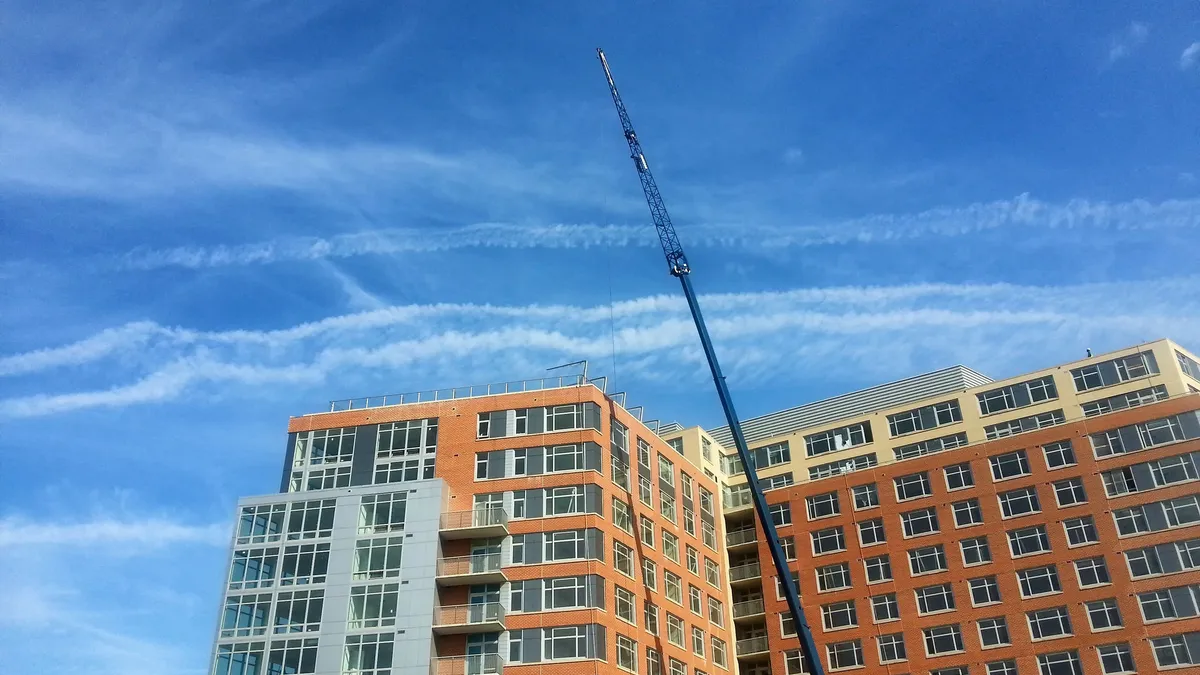Dive Brief:
- April construction starts fell 13% from March, according to Dodge Data & Analytics, to a seasonally adjusted annual rate of $647.8 billion.
- Nonbuilding construction, which was the primary driver behind last month's gains, fell 39% in April, following a dearth of the large projects that boosted first-quarter starts. The residential segment dipped 5% on weaker multifamily and single-family activity, and nonresidential was down 1%, with a drop-off in store and warehouse construction canceling out the 6% uptick in commercial starts.
- Total construction starts were up 3% year-over-year but fell 4% for this year's January-to-April period compared with the same period in 2016. From March, the Dodge Index lost 20 points to land at 137.
Dive Insight:
The cooldown in construction starts following a robust first quarter comes as part of the familiar up-and-down nature of the construction industry's recovery and expansion. Though activity slowed in April, a number of major projects broke ground last month.
Six large wind farms started in Ohio ($450 million), Texas ($342 million), Illinois ($315 million), Iowa ($255 million and $252 million) and New York ($156 million). The multifamily residential category also saw a number of $100-million-plus starts, including a $387 million residential development at the Oceanwide Center in San Francisco. The complex also saw its $780 million office component start construction, along with Facebook's $300 million data center in Fort Worth, TX.
The Dodge Data results align with a report from ConstructConnect that found a 7.2% slide in starts for the nonresidential category last month. Despite moderate gains in the heavy engineering (10.4%) and institutional (27.9%) categories, sizeable contractions in the commercial category (-35.4%) and industrial (-72%) segments kept April in the negative.
A weak start to 2017 also prompted ConstructConnect to lower its 2017 starts forecast from +7.4% to +4.8%. The revision reflected an unexpectedly weak first quarter and waning optimism surrounding the Trump administration's ability to fortify its proposed tax reform and infrastructure spending agendas.














